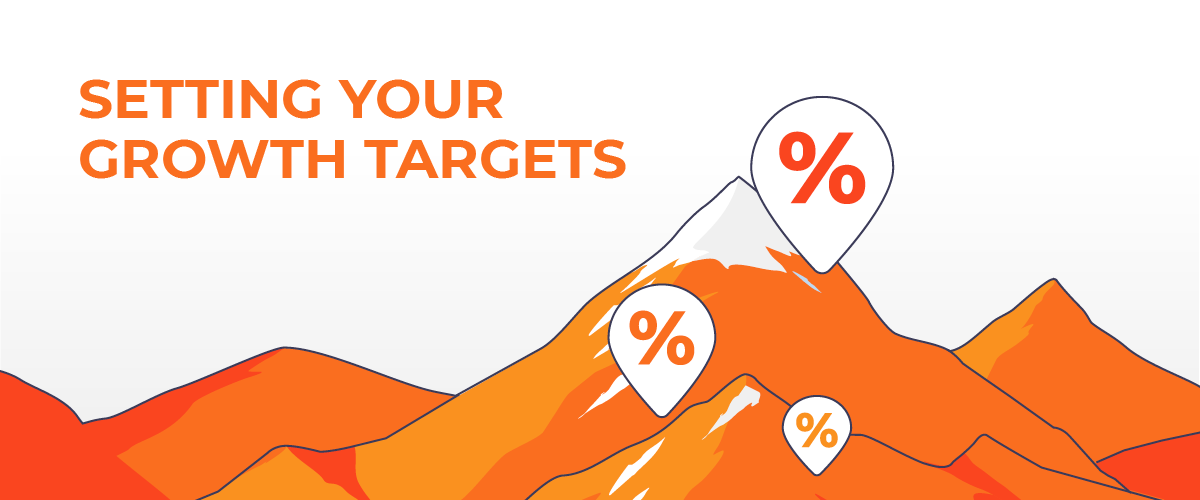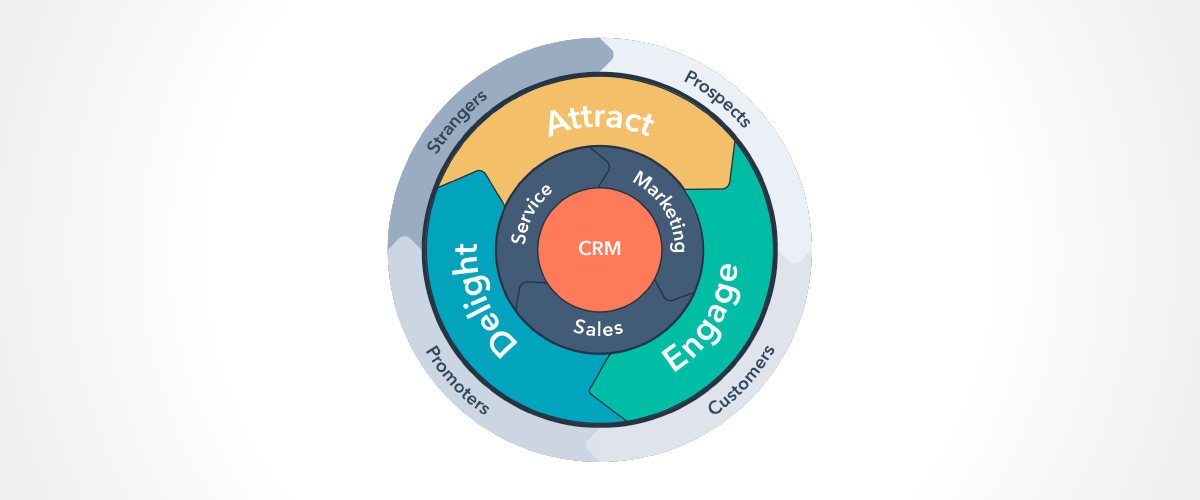What does ARR mean?
What does ARR mean?
Get weekly
HubSpot Updates
What does ARR stand for?
ARR stands for Annual recurring revenue is a key metric for companies that use subscription-based pricing models –– so, most SaaS businesses. s
Your ARR figure will offer a good indication of how your business is performing and the growth rate you should target to ensure continued success.
Simply put, ARR is the total amount of annual income earned from your SaaS subscribers.
To calculate Annual recurring revenue, you can apply this formula:
ARR = (Overall subscription cost per year + Recurring revenue from add-ons or upgrades) - Revenue lost from cancellations
Table of Contents
Who is responsible for ARR growth?
Setting your revenue generation target
4 ways to increase your recurring monthly revenue
Why tracking monthly recurring revenue (MRR) is important
What to do when your ARR is shrinking
How Digital Marketing is increasing sales for SaaS
Who is responsible for ARR growth?
The future growth and longevity of your subscription business depend on a combination of factors –– primarily, the quality of your market offering and the sales processes around it. Your business strategy needs a sharp focus on continuous improvement and a firm alignment between your sales and marketing activities to achieve year-on-year growth.
Your development team should work closely with sales and marketing to build and enhance features that will improve the customer’s user experience(UX). This effort helps to protect your monthly recurring revenue (MRR) and prevent subscriber disengagement and eventual churn.
It’s also the role of your marketing team to create helpful content that keeps users interested and informed about the benefits of your solution through each step of the buyer’s journey. Educational content helps leads and customers self-serve when troubleshooting or building a use-case for your particular SaaS.
Helping prospects to visualise the results your software can achieve is a huge part of what your marketing team should be striving to do. Without putting this effort in, subscribers can easily be lured away by competitors.
Your customer service team also plays a huge role in implementing your retention strategy and the customer delight phase of your buyer’s journey. They can offer product support, and encourage the purchase of add-ons or subscription tier upgrades that help the customer get more out of your software.
Why is ARR growth important?
The value of the SaaS industry is increasing, attracting plenty of competitors who are vying for a piece of your customers’ budget. Because of the nature of the product you sell – intangible, service-based technology – keeping up with advances and developments in the software realm is crucial.
This means a significant portion of your resources have to go towards improving and evolving your SaaS solution in order to be a relevant player in your sector.
Without considerable ARR growth, your SaaS can quickly slide down the utility ranks for users, and your pricing may no longer match the value you offer.
A good example is Zoom – the go-to video conferencing tool of 2020. Although this purpose-built app was already fairly practical and feature-rich, it suddenly needed a bigger ecosystem and the ability to integrate with various other applications. What’s more, it had to give all those newly subscribed ‘free’ users a reason to become paying customers.
Sudden growth doesn’t guarantee continuous success; it also brings increased expenditure –– Zoom’s expenses doubled year over year to $201 million. To retain its burgeoning list of subscribers, Zoom is working to improve UX by creating an events platform and marketplace to facilitate large numbers of paying customers who’d like to tune into virtual concerts, charity events and conferences.
This evolution can only be attributed to Zoom’s growing ARR.
An accurate estimation of your revenue growth rate provides you with the key data to map out your resources, identify opportunities and shortfalls in your sales pipeline, and keep your marketing efforts aimed at the right audiences.

Setting your revenue generation target
Getting the cogs in your SaaS recurring revenue flywheel turning is hard work – studies state that it may take up to six years to reach $1 million in ARR. Your company’s growth is only relevant when compared to similarly-sized businesses, so where should you pin your goals?
Here are some interesting findings from SaaS Capital:
A $2 million SaaS company needs to be growing at more than 90% year-over-year to be in the top 25% of its peers.
A $10 million SaaS company needs to be growing by more than 55% to be in the top quartile.
Companies up to $10 million in ARR need to be growing by at least 20% annually to avoid being in the bottom quartile.
Your revenue target will be affected by your ability to retain customers; for this, you’ll need to review your current churn metrics. Companies that report a median growth of 40% have retention between 100% and 110%.
Unlike other business models, subscription-based companies need to factor churn into their revenue growth calculation. Your revenue growth targets should be based on short and long-term goals, considering that your revenue growth percentage will decrease as your revenue grows.
Once your ARR becomes more predictable, you’ll have enough data to understand customer acquisition cost and ensure that your pricing model aligns with your customer’s expectations.
When things are more stable – product-market fit has been achieved – you can look at ways of growing revenue through upsells, renewals and ad-ons. So, as you can see, your revenue-generating goals will always be impacted by variables depending on where your business is currently positioned, the market conditions and your existing capital reserves.
To achieve these goals, there are five key metrics you have to get fanatical about:
MRR/ ARR - Monthly / Annual Recurring Revenue
CAC - Customer Acquisition cost
LTV - Life Time Value
Churn
TROI- Time to return on investment
Since very few SaaS companies have infinite supplies of resources, keeping an eye on your monthly cash flow is just as important as watching your ARR. Observe every metric carefully, particularly TROI, as this will really serve as the ultimate indicator of how long you can sustain your growth strategies.
Learn more about setting your revenue generation target HERE
4 ways to increase your recurring monthly revenue
Your ability to grow your MRR is an early success on the path to sustained revenue growth annually. Keeping subscribers on board from month to month is the first indicator that your strategies are working.
There are numerous MRR growth tactics to try out, but here are some that we find most effective:
1. Simplify your customer's decision-making process
Your pricing strategy needs to be straightforward.
Complex subscription tiers or packages that leave prospects scratching their heads as to which one is right for them will lead to an abandoned sign-up.
Structure your pricing page in a way that answers the customer’s questions and points them towards the subscription option that suits them best.
2. Offer a free trial or a freemium, then offer an upsell
Since your customer can’t walk into a shop, hold and try out your product, offering a free trial is the best way to let them have a go at flipping all the switches on your dashboard and getting a real sense of what it’s like to use your software.
To drive them towards a purchasing decision, choose a lead segment that is most likely to convert and offer them a limited-time-only upgrade to a subscription. You can offer this at a discounted price or offer other perks to help them sign up and become paying subscribers.
3. Act on feedback
Proactively improving your subscription service based on the feedback you get from customers is one of the best ways to win over your users’ long-term support.
Send our surveys or invite customers to report issues or leave suggestions on how you can better serve their needs or what features may help them to get more out of your software.
Companies that are flexible and quick to implement improvements are far more likely to keep and attract customers.
4. Focus on improving the quality of your leads
Many SaaS companies devote themselves to acquisition, writing off a large number of churned users as part and parcel of the SaaS business. However, when you apply inbound marketing best practices, you’ll start getting a higher quality of leads through the door that are far more likely to convert and remain loyal subscribers.
To get your lead generation strategy bringing this calibre of leads into your sales funnel, you need to implement an inbound marketing strategy that’s truly focused on your ideal buyer persona.
Discover three more ways to increase your revenue HERE
Why tracking monthly recurring revenue (MRR) is important
Consistency in your subscription revenue is the key to survival in the SaaS world. Your monthly recurring revenue (MRR) metric serves as a good indicator of how things are going and where they’re headed. MRR refers to the monthly income you’re expecting to receive from your subscribers.
You need an accurate idea of your MRR when speaking to investors or trying to predict the overall growth of your SaaS and the rate at which this growth is occurring.
If your monthly sign-ups are drastically fluctuating, that’s an indication that something somewhere isn’t quite aligned. For example, your advertising may be misleading or simply attracting the wrong type of interest. Users may not be getting the experience they hoped for from your software.
Alternatively, sudden spikes in subscriptions may not just be anomalies; they may be a sign that your solution has found an unexpected niche that you should further develop.
Knowing your MRR is part of your optimisation strategy, something every SaaS company should continuously be doing. Understanding the health of your business now will help you course-correct when necessary, discover new opportunities, scale your team accordingly and generate even more value from your marketing efforts.
Learn more about tracking monthly recurring revenue HERE
What to do when your ARR revenue is shrinking
Seeing your ARR figures decline can be unnerving –– to lose customers is to lose money, after all. You may be asking, is it just a slump, or are bigger issues at play? If so, how do you identify and rectify them?
Firstly, you have to look at the components that make up your total ARR:
New sales
Customers retained from renewals
Subscription upgrades
Subscription downgrades
Purchase of add-ons
Revenue lost from churn
An upset in any one of these factors could impact your seemingly predictable revenue.
Declining ARR typically looks like this:
High churn rate
Low customer lifetime value
Unbalanced customer acquisition costs
If your product and customer service quality remains high, you need to take a deeper look at the strategies you are implementing to attract, engage and delight your customers.
Here are a few suggestions to help you rescue a shrinking ARR:
Evaluate current strategy
It may be that your SaaS has moved into a new phase, and you haven’t tweaked your campaigns or re-evaluated the buyer personas you started out with. Things may have changed, which means that you need a fresh or enhanced approach to attract the right customers to your business. Your evaluation can include things such as A/B testing your paid advertising, looking at interactions on your social media, paying closer attention to the types of questions your customers are asking and ensuring you have up-to-date content to help answer those queries.
Increase your ARPU
ARPU is your average revenue per user. If you already have loyal customers that enjoy using your SaaS, it may be worth exploring what more you could do to improve their experience. Building new features or integrating with complementary applications to boost your customer’s lifetime value – these are just some of the steps you can take to get your customers subscribing to more enhanced pricing packages and using your software as a hub rather than a peripheral application.
Create a customised SaaS sales funnel
As a quick response to the dip in revenue, launching a sales funnel targeted at decision-level prospects can help you turn things around. Your tailored sales funnel will work to leverage your existing online marketing efforts and help you grow MRR consistently. This sales funnel is essentially a landing page that encourages a specific action. It’s a great way to target specific leads and gain key data into a niche audience. For more info on how to build your own opt-in page, click here.
Get more ideas on how to battle shrinking revenues HERE.
How digital marketing is increasing sales for SaaS
Digital marketing and SaaS are a powerful duo. Since both are tech-based solutions, they truly complement one another. SaaS digital marketing focuses on making the software solution you’re offering easy for the buyer persona to visualise and understand how its benefits and features will help to solve their problem.
Marketing automation helps SaaS companies continuously nurture their leads and track essential data about visitors’ interactions with their website, usually the platform from which the SaaS solution is purchased. This can help trigger relevant content being sent to the visitor and guide them toward the right sales funnel.
Further Reading
The benefits of HubSpot for SaaS Businesses
Our content includes affiliate links. This means that we may receive a commission if you make a purchase through one of the links on our website. This will be at no cost to you and helps to fund the content creation work on our website.

